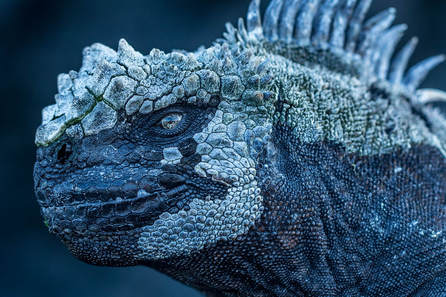Written by John Edward Betancourt It’s rare that a particular event on television is as good as advertised, but BBC America’s ‘One Amazing Summer’ is something that has completely and utterly lived up to the hype since it’s delivered one incredible series after another chronicling something special and incredible about our world and quite frankly, this nonstop learning fest has made me realize, that there is plenty more to discover about our magnificent world and the life that thrives upon it and last night, this proud and newfound tradition of knowledge and examination of planet earth continued with a decidedly different kind of series, Mission Galapagos. I say different, simply because the first episode of this fascinating new series, ‘Cauldron of Life’, tells a story about this unique chain of islands in a way that no other Earth-centric series has managed to this summer. While One Amazing Day and South Pacific gave us broad and sweeping views of the planet and the region that the Galapagos Islands inhabits, this series, is clearly narrowing its focus to truly give us an inside look at the islands in question and, it’s also changing up the style of storytelling as well. Whereas, the last two documentaries featured an observer’s view for the audience, accompanied by magnificent narration, this time around we are pulled into the trenches to meet the crew of the research vessel Alucia, to see first-hand the work this team is performing to learn more about this magnificent place. If anything, this change in the design of the show (which is accompanied by narration to keep things familiar) makes for some unique storytelling, and for this pilot episode, we joined the various teams aboard this vessel as they searched for the ultra-rare Pink Iguana, a species that just so happens to live on the slopes of an active volcano, all in the hopes of seeing how this species is thriving and if can be saved from the brink of extinction and it was incredible to meet these rare creatures and also venture a thousand meters beneath the sea to look for undiscovered species living in the deep. But, while it was supremely awesome to make these discoveries alongside this intrepid team, there is a specific rhyme and a reason as to why so much effort is being poured into learning more about the diverse species that live here. Because our world is changing, specifically the climate, and scientists are extremely curious to know exactly how these native creatures are going to or are already adapting to the incredible challenges they now face and will continue to face and well, some of the wildlife here seems to be doing just fine. After all the giant tortoises in this place, continue to breed and thrive despite the drought that some of them are facing and the marine iguana, a fascinating breed of lizard that has learned how to take to the ocean to feed off of the algae that thrives under the sea, is figuring out how to adapt in record time. Because their food supply is slowly disappearing with every cycle of the El Niño phenomenon and to combat this lack of food, these lizards are physically shrinking in order to use less energy and in turn, consume less food. Yet, what’s truly remarkable about this documentary, is how much science and knowledge the folks behind the scenes were able to pack into a single hour, because this series premiere really was quite the learning experience and it kept my attention from the get go and I have to admit, I felt a little sad seeing this story come to an end because I was hungry to learn more. But, the good news is, we’ve barely scratched the surface when it comes to the wonders of the Galapagos Islands and with two more episodes to go in this series, I’ve no doubt we have plenty more incredible discoveries to enjoy alongside the crew of the Alucia and I for one, cannot wait to tune in next week to see what stunning creatures and discoveries await us in this unique and beautiful place, because it truly is breathtaking. Until next time.
0 Comments
Leave a Reply. |
Archives
April 2025
|
|
© 2012-2025, Nerds That Geek LLC.
All Rights Reserved. |
uWeb Hosting by FatCow

 RSS Feed
RSS Feed